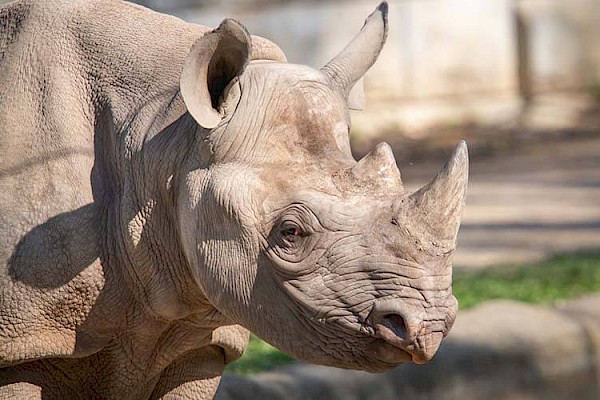

Black Rhinoceros
Diceros bicornis michaeliFamily
RhinocerotidaeConservation Status
Critically EndangeredDistribution
Sub-Saharan and Eastern Africa, primarily Kenya and Tanzania, with an introduced population in South AfricaHabitat
Tropical bushlands and savannasFactoid
Black rhinos are not black at all, but rather dark gray. They are constantly coated in a mud coat to help keep them cool and prevent insect bites.Black rhino are browsers and have a prehensile upper lip that allows them to easily eat trees and shrubs. They are more solitary than other rhino species; however, females can be found at watering holes, while males stay alone.
Together, a group if rhinos is called a ‘crash’. Although rhinos have poor eyesight, they communicate with each other through vocalizations, sneezes, and by scent. Black rhinos are not black at all, but rather dark gray. They are constantly coated in a mud coat to help keep them cool and prevent insect bites.
Rhinos mothers are very attentive and protective of their calves. Rhino calves stay with their mothers for up to four years. Black rhino have two horns that are made of keratin - the same material as human fingernails, animal hooves, bird feathers and beaks, and reptile and fish scales. Threat: Poaching for their horns, illegal wildlife trade.









